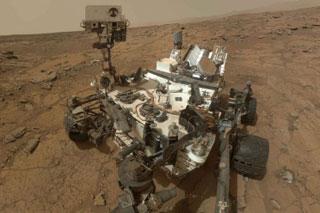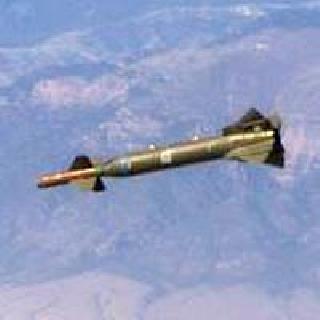
This self-portrait of NASA's Mars rover Curiosity combines 66 exposures taken by the rover's Mars Hand Lens Imager (MAHLI) during the 177th Martian day, or sol, of Curiosity's work on Mars. Photo: NASA/JPL-Caltech/MSSS.
WASHINGTON (PTI): Scientists, including one of Indian-origin, have analysed data from NASA's Mars rover Curiosity to confirm that Martian meteorites discovered on Earth did indeed come from the Red planet.
A key new measurement of Mars' atmosphere by Curiosity provides the most definitive evidence yet of the origins of Mars meteorites while at the same time providing a way to rule out Martian origins of other meteorites, researchers said.
The confirmation was made possible by a high-precision count of two forms of argon gas - Argon-36 and Argon-38 - accomplished by the Sample Analysis at Mars (SAM) instrument on Curiosity.
These lighter and heavier forms, or isotopes, of argon exist naturally throughout the solar system.
But on Mars the ratio of light to heavy argon is skewed because a lot of that planet's original atmosphere was lost to space, with the lighter form of argon being taken away more readily because it rises to the top of the atmosphere more easily and requires less energy to escape.
That's left the Martian atmosphere relatively enriched in the heavier Argon-38.
Years of past analyses by Earth-bound scientists of gas bubbles trapped inside Martian meteorites had already narrowed the Martian argon ratio to between 3.6 and 4.5 (that is 3.6 to 4.5 atoms of Argon-36 to every one Argon-38) with the supposed Martian "atmospheric" value near four.
The new SAM direct measurement on Mars now pins down the correct argon ratio at 4.2.
"We really nailed it," said Sushil Atreya of the University of Michigan, Ann Arbor, the lead author of a paper reporting the finding in Geophysical Research Letters, a journal of the American Geophysical Union.
"This direct reading from Mars settles the case with all Martian meteorites," he said.
Scientists have been interested in the argon ratio in Martian meteorites because it was - before Curiosity - the best measure of how much atmosphere Mars has lost since the planet's earlier, wetter, warmer days billions of years ago.
Figuring out the planet's atmospheric loss would enable scientists to better understand how Mars transformed from a once water-rich planet more like our own to the today's drier, colder and less hospitable world.
"Other isotopes measured by SAM on Curiosity also support the loss of atmosphere, but none so directly as argon," Atreya said.
"Argon is the clearest signature of atmospheric loss because it's chemically inert and does not interact or exchange with the Martian surface or the interior. This was a key measurement that we wanted to carry out on SAM," he said.
 Previous Article
Previous Article Next Article
Next Article













The Indian Air Force, in its flight trials evaluation report submitted before the Defence Ministry l..
view articleAn insight into the Medium Multi-Role Combat Aircraft competition...
view articleSky enthusiasts can now spot the International Space Station (ISS) commanded by Indian-American astr..
view article